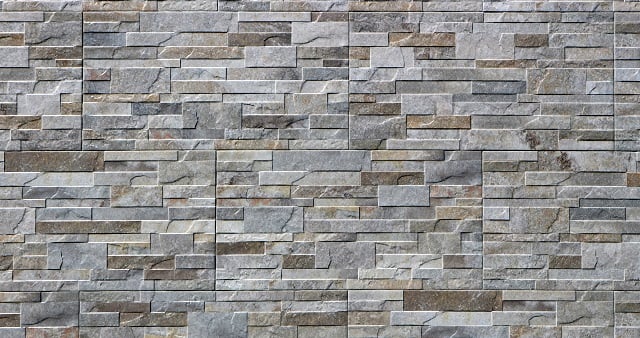
Stone is a trendy way to add texture and curb appeal to your home. This natural style is a popular enhancement for exteriors and interiors alike. Our guide helps you find the best veneer to give your home a modern boost with an organic twist.
On This Page:
Types of Stone Veneer
Stone veneer is a decorative material for interiors and exteriors. It’s frequently used to cover a home’s façade, indoor fireplaces or outdoor grilling areas. Like many other home improvement materials, stone veneer is versatile. Now, it’s available in natural stone or faux sheets.
Natural
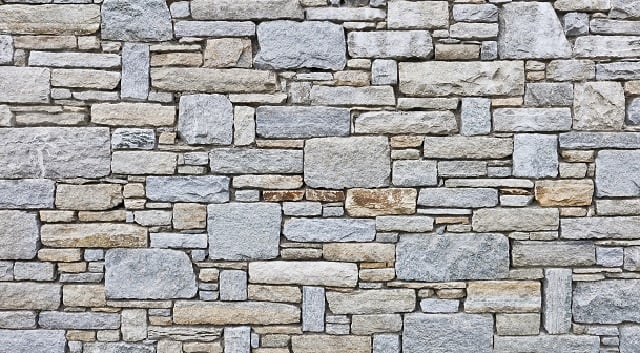
Made by mother nature, natural stone veneer comes in endless shapes, colors and sizes. And thanks to modern technology, natural stone is now available in 1-inch depth for easy transportation and installation. These are some of the top rated stone veneer options for your home:
| Style | Characteristics |
|---|---|
| Stacked | Snug fit Raised edges |
| Mosaic | Irregular shapes Bold patterns |
| Streaked | Cool hues Mixed line patterns |
| Rounded | Worn edges Inviting textures |
| River Rock | Speckled stones Smooth shades of gray |
| Ashlar | Ultra-light Straight lines |
Faux
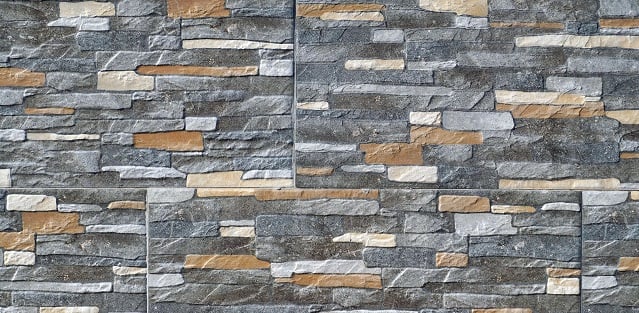
Manufactured stone veneer is a combination of concrete and other compounds poured into stone-shaped molds. Created in the 1950s, faux veneer mimics the look of natural stone with a wide range of thickness and colors available. These are the best faux stone panels and their characteristics:
| Style | Characteristics |
|---|---|
| Dry Stack | Looks like building blocks Contemporary |
| Mortared | Mortar between each stone Traditional |
For most home owners, the choice between natural and faux stone veneer comes down to budget. Installing stone veneer costs between $87,500 and $125,000 depending on your choice of materials and the area to cover.
Ready to start your Stone Veneer Installation?
Find ProsPros & Cons
These are the pros and cons of each veneer type, to help you make the decision between natural and faux:
| Pros | Cons |
|---|---|
| Natural beauty Rich colors Little maintenance |
Hard to cut Sense Difficult to source |
| Pros | Cons |
|---|---|
| Easy to install Less expensive Lightweight |
Homogeneous Can fade Brittle |
Things to Consider
Choosing between manufactured and stone veneer also depends on the use and installation of your material. While natural stone works well for structural use, manufactured cannot hold any weight. The versatility of natural stone allows you to use it for flooring, while manufactured veneer is decorative only.
Manufactured veneer installs with mortar on any type of surface, including dry way. Natural stone works best with porous concrete, stone or block.
For these reasons, it’s best to contact a stone veneer contractor near you to carry out the project.
FAQs
Can you use stone veneer outside?
Stone veneer is a user-friendly option for exteriors and interiors.
What’s the difference between brick and brick veneer?
Brick holds up the home structure. Brick veneer is a siding effect for decorative purposes.
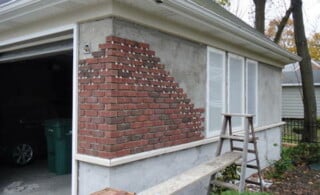 Brick Veneer Siding
Brick Veneer Siding 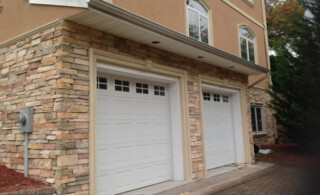 Masonry Options – Brick, Stone, and More
Masonry Options – Brick, Stone, and More  How to Find & Hire a Masonry Contractor
How to Find & Hire a Masonry Contractor 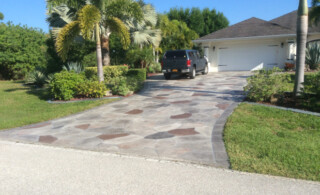 Stone and Gravel Driveways
Stone and Gravel Driveways  The Importance of Chimney Repair
The Importance of Chimney Repair 

Are You Familiar With This Topic? Share Your Experience.